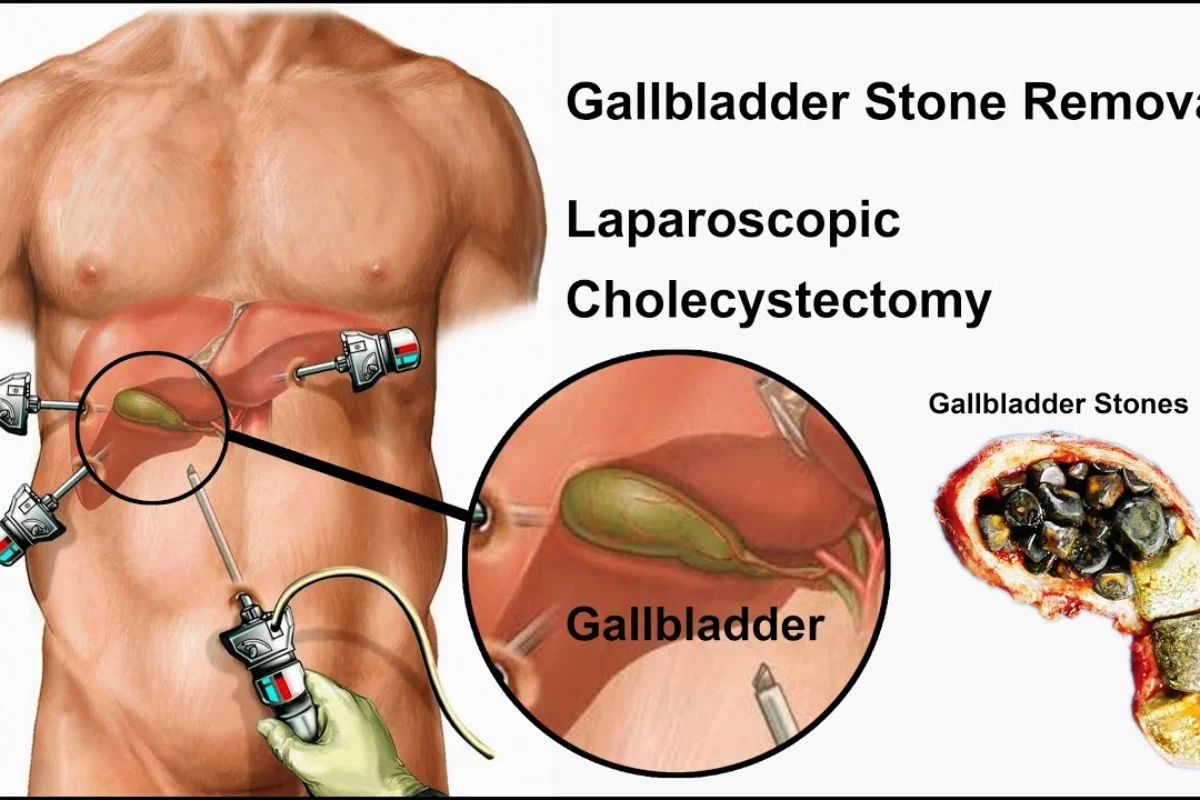Gallstones are hardened deposits of gastral fluid that can form in the gallbladder stone. The gallbladder is a small, pear-shaped organ on the right side of the abdomen, just below the liver. The gallbladder contains a digestive fluid called bile, which release into the small intestine.
Table of Contents
Symptoms of Gallbladder Stone
Most patients do not knowledge any symptoms of gallstones and, in many cases, discover through tests for other problems such as x-rays, abdominal surgeries, or other medical procedures.
Although the mechanism is not well understood, a percentage of patients develop symptoms such as:
- Biliary dyspepsia: intolerance to fatty foods, flatulence, abdominal inflammation, and vomiting.
- Acute or chronic cholecystitis. Gallbladder infection causing pain and fever. It is a gallbladder swelling, mainly driven by the obstruction of the bile ducts. Cholelithiasis can cause acute cholecystitis. If it occurs promptly, or chronic cholecystitis, if it involves a periodic appearance of the problems related to cholecystitis. Surgery will be necessary in cases where cholecystitis causes acute gallbladder inflammation.
- Choledocholithiasis (migration of a stone through the ducts that transport bile to the intestine, generating pain and jaundice, which is a yellow colouration in the eyes and skin)
- Pancreatitis (inflammation of the pancreatic gland).
Biliary colic deserves special mention, which presents as:
- Abdominal pain usually occurs after eating food, and it is in the upper right of the abdomen until it either subsides spontaneously or takes analgesics or spasmolytics.
- Fever and jaundice. Although rare, biliary colic is sometimes accompanied by fever and yellow discolouration of the skin and eyes, called jaundice.
- Nausea and vomiting.
These complications can be mild and easily treated, although, in some instances, they can trigger a severe life-threatening process.
Types of Stones in the Gallbladder
Gallstones can form when there is an imbalance of the chemicals in the gallbladder, cholesterol, calcium bilirubin, and calcium carbonate. Gallstones are of three types:
Cholesterol Stones are the most common (accounting for about 75%-80%). They are usually greenish-yellow in colour and made up of hardened cholesterol.
Pigmented stones form from the crystallisation of calcium when there is excess bilirubin. They are black and brown.
Mixed stones: So they are a combination of cholesterol and pigmented stones.
How Gallstones are Diagnosed
Different tests to diagnose this pathology depend on the clinical history and the symptoms described by the patient. In general, they usually carry out:
Analytical tests. A blood test will show the parameters that indicate correct biliary drainage.
Diagnostic imaging tests such as abdominal ultrasound, a test that is especially effective in these cases. In addition, “In some cases, additional tests such as abdominal CT or CholangioRMN are indicated,” according to Dr Machado.
Types of Stone Treatments
The treatment will vary depending on the disease’s stage and severity and the symptoms the patient presents. Thus, surgery will not be necessary for patients with asymptomatic cholelithiasis, and a detailed follow-up will choose to see how the disease progresses. So in patients with symptoms or complications, treatment with medication or surgery will select.
So in cases where gallstones are detected, surgical removal of the stones by laparoscopic or minimally invasive surgery recommends. Doctor Machado explains that in this type of laparoscopic surgery, “postoperative pain is mild or moderate during the first 24-48 hours and subsides with conventional analgesia. In addition, return to work and normal life is usually a week after surgical intervention”. Other advantages of this procedure are;
- Reduction in length of hospital stay
- Lower risk of complications associated with opening surgery
- More accessible care for minor wounds caused by incisions.
- Hangtags
Diet after Gallbladder Removal
Therefore, the patient must carefully monitor his diet after removing the gallbladder. It will help the patient adjust to the changes in the new digestion with less discomfort. The following eating habits should follow:
- Eat smaller, more frequent meals
- Have low-fat food
- High-fiber, gassy foods should start slowly
- Caffeinated beverages and dairy products are difficult to digest, so they should avoid
- Spicy foods should introduce gradually.
Conclusion
Gallstone treatment may not be necessary if you have no symptoms. Suppose you have cholecystitis or are experiencing symptoms associated with gallstones. The usual treatment is intravenous antibiotics and surgical gallbladder removal (cholecystectomy). In most cases, your surgeon will execute a laparoscopic cholecystectomy (with scopes inserted through small incisions in your abdomen).

